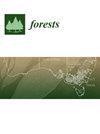马耳他群岛木材腐朽真菌的轴突培养和 DNA 条形码鉴定
IF 2.4
2区 农林科学
Q1 FORESTRY
引用次数: 0
摘要
木材腐朽真菌因其生态作用和生物技术应用而成为重要的研究对象。它们利用酶来分解木质素、纤维素和半纤维素,从而改变这些复杂大分子的化学结构。由于具有降解木材的能力,这些真菌会对木质结构和树木造成结构性破坏,尤其是那些健康水平很低的树木。以前对马耳他群岛木材腐朽真菌的研究仅限于少数作者描述的记录和清单。这项研究的目的是全面描述马耳他群岛木材腐朽真菌的多样性,包括基于 DNA 条形码的最新核对表,以及在马耳他大学生物系种子库建立首个木材腐朽真菌培养物收藏。在雨季期间,对马耳他群岛的林区和历史悠久的花园进行了多次调查。利用宏观和微观形态特征、二分键以及分子数据对分离菌进行了鉴定。记录了生长在 14 种不同寄主植物上的基生菌,制作了 11 种轴生培养物,并通过 DNA 条形码确定了 9 种木材腐朽真菌。收集到的轴生分离物包括一种 Aurificaria cf. euphoria、三种 Ganoderma resinaceum sl.、两种 Laetiporus sulphureus、一种 Inonotus sp.、一种 Inonotus rickii anamorph、一种 Inocutis tamaricis、一种 Stereum hirsutum 和一种 Pleurotus eryngii。不过,虽然采集并鉴定了 Coriolopsis gallica 的菌丝体,但未能将其分离出来。本文章由计算机程序翻译,如有差异,请以英文原文为准。
Axenic Culture and DNA Barcode Identification of Wood Decay Fungi from the Maltese Islands
Wood-decaying fungi are important study subjects for their ecological role as well as for their biotechnological applications. They break down lignin, cellulose, and hemicelluloses using enzymes that modify the chemical structure of these complex macromolecules. Due to their ability to degrade wood, these fungi can create structural damage to wooden structures and to trees, especially those with very low level of fitness. Previous studies on wood decay fungi in the Maltese Islands are limited to records and checklists described by a handful of authors. The aim of this study was to provide a comprehensive description of wood decay fungal diversity in the Maltese Islands including an updated checklist based on DNA barcoding, as well as to establish the first wood-decay fungal culture collection at the Biology Department Seed Bank of the University of Malta. Several surveys were carried out during the rainy season along wooded areas of the Maltese Islands as well as in historical gardens. Isolates were identified using macro- and micro-morphological features, dichotomous keys, as well as molecular data. Basidiomes were recorded growing on 14 different host plant species, 11 axenic cultures have been made and 9 species of wood decay fungi have been conclusively identified by DNA barcoding. The collection of the axenic isolates includes one of Aurificaria cf. euphoria, three of Ganoderma resinaceum sl., two of Laetiporus sulphureus, one of Inonotus sp., one of Inonotus rickii anamorph, one of Inocutis tamaricis, one of Stereum hirsutum, and one of Pleurotus eryngii. However, the mycelium of Coriolopsis gallica, though collected and identified, could not be isolated.
求助全文
通过发布文献求助,成功后即可免费获取论文全文。
去求助
来源期刊

Forests
FORESTRY-
CiteScore
4.40
自引率
17.20%
发文量
1823
审稿时长
19.02 days
期刊介绍:
Forests (ISSN 1999-4907) is an international and cross-disciplinary scholarly journal of forestry and forest ecology. It publishes research papers, short communications and review papers. There is no restriction on the length of the papers. Our aim is to encourage scientists to publish their experimental and theoretical research in as much detail as possible. Full experimental and/or methodical details must be provided for research articles.
 求助内容:
求助内容: 应助结果提醒方式:
应助结果提醒方式:


